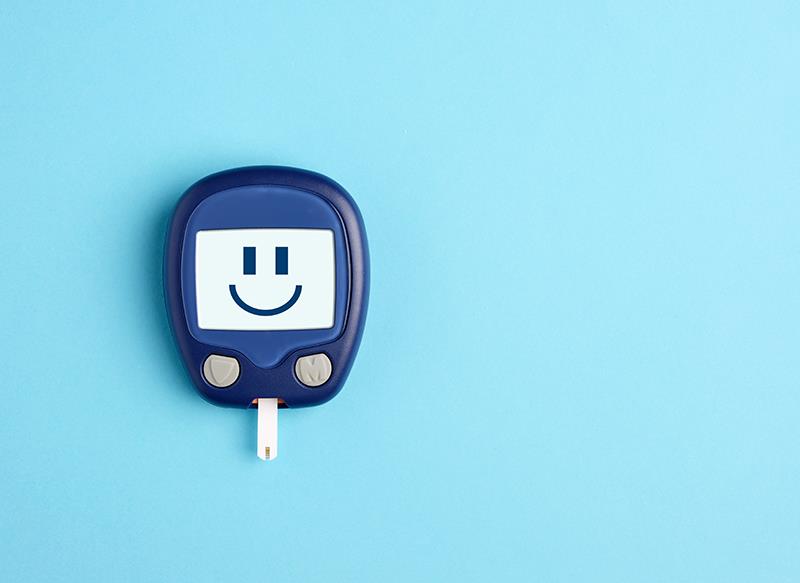Inhaled insulin beneficial in youth with diabetes





Inhaled insulin appears to be equally efficacious and safe as the injected rapid-acting insulin analogue in children and adolescents with diabetes, according to data from the INHALE-1 study.
The inhaled insulin product is made by using technosphere technology, a platform that allows for lung delivery of medicine, said principal investigator Dr Michael Haller from the University of Florida in Gainesville, Florida, US. “When it’s inhaled through the lung, the insulin is able to be absorbed with incredible speed, with a peak occurring just 12 to 15 minutes after delivery, as opposed to what we call rapid-acting analogues.”
Analysis for the primary endpoint of HbA1c at 26 weeks showed a 0.18–percent-difference between inhaled insulin and rapid-acting analogue, which failed to meet the prespecified noninferiority criteria. HbA1c values rose from 8.22 percent at baseline to 8.41 percent with inhaled insulin, whereas it remained at 8.21 percent with rapid-acting analogue (p=0.091). [Haller M, et al, ADA 2025]
However, a sensitivity analysis that excluded a single extreme outlier—a patient whose HbA1c consistently measured 15 percent at every study visit post-randomization—resulted in a statistically significant noninferiority, with the difference narrowing to just 0.14 percent (p=0.026).
“Regardless of whether you look at this as the primary or the sensitivity analysis, I think we could all agree that the differences in HbA1C between the groups are really not particularly impressive statistically or clinically,” Haller said.
In subgroup analyses stratified by age (≥13 or <13 years) and baseline A1c levels (<8.5 percent or ≥8.5 percent), there was no significant difference in how the inhaled insulin performed compared with rapid-acting analogue.
Secondary endpoints
At 26 weeks, the proportion of patients with HbA1c <7.0 percent was 10 percent in the inhaled insulin group and 9 percent in the rapid-acting analogue group. HbA1c levels improved >0.5 percent in 15 percent and 23 percent of patients, respectively. On the other hand, 29 percent of patients in the inhaled insulin group experienced a worsening in HbA1c of >0.5 percent as opposed to 20 percent in the rapid-acting analogue group.
“[The finding] indicates that the drug works quite well for some but doesn’t work so well for others just like any other kind of insulin. If you don’t take it properly, it does not work,” Haller pointed out.
Both groups also saw a slight decrease in time in target glucose range (70–180 mg/dL), going from 42 percent to 39 percent with inhaled insulin and from 43 percent to 41 percent with injected rapid-acting insulin, suggesting that the two insulins were equivalent in this measure (treatment group difference, –2.2 percent, 95 percent CI, –7.0 to 2.7; p=0.38).
Of note, glucose excursion was far less with the inhaled insulin vs rapid-acting analogue, and the time to peak glucose was shorter, Haller noted.
“I interpret this to mean that if you take the insulin as you’re supposed to … you have far better glycaemic coverage with the inhaled insulin than you can achieve with rapid-acting analogues,” he said.
Finally, inhaled insulin was associated with less weight gain (treatment group difference, –4.2, 95 percent CI, –7.4 to –0.9; p=0.009) and increased patient and parent satisfaction (p=0.004).
Safety
Adverse events (AEs) occurred in 75 percent of patients in the inhaled insulin group and in 66 percent in the rapid-acting analogue group. Two patients who received inhaled insulin had severe hypoglycaemia. Meanwhile, one patient on rapid-acting analogue experienced severe hypoglycaemia, while another developed diabetic ketoacidosis.
Cough was the most common respiratory/pulmonary AEs considered possibly related to inhaled insulin, occurring in 17 percent of patients. These events were typically mild, and a sip of water before or after the inhalation mitigated the issue.
The other most important thing in terms of safety is the FEV1 results, according to Haller. The treatment groups showed almost identical FEV1 measurements from baseline to week 26, with a slightly greater decrease in the rapid-acting analogue group, further suggesting no significant concern for pulmonary issues with inhaled insulin, he said.
Taken together, these data point to inhaled insulin as an “important alternative” to injected rapid-acting insulin analogue for youth with diabetes, Haller concluded.
INHALE-1
INHALE-1 included 230 children (mean age 12.6 years, 38 percent female), of which 98 percent had type 1 diabetes and 2 percent had type 2 diabetes, who were taking multiple daily insulin injections (mean 1.02 units/kg/day). The mean diabetes duration was 4.4 years. At baseline, the mean HbA1c was 8.2 percent, and the mean time in target glucose range (70–180 mg/dL) was 42 percent. These patients were randomly assigned to receive the inhaled insulin (n=117) or the rapid-acting analogue (n=113).
For those in the inhaled insulin group, the starting dose was double their standard rapid-acting insulin analogue dose and then rounded down to the nearest multiple of 4 (given the way the cartridges are made: 4, 8, or 12 units). The first dose was administered in-clinic with a standardized meal, and the subsequent doses were titrated as needed. Patients were instructed to inhale the insulin at the start of a meal, or no more than 20 minutes after, and then to adjust their dose based on 60 to 90-minute post-meal glucose readings, aiming for a target of 70–160 mg/dL. Additional correction doses were advised if glucose levels exceeded 160 mg/dL one hour after eating, and bedtime corrections were also encouraged.
In the rapid-acting analogue group, patients were instructed to take their bolus dose 15 minutes before meal. Doses were adjusted for each meal based on the lowest corresponding pre-meal glucose readings from the preceding 3 days.